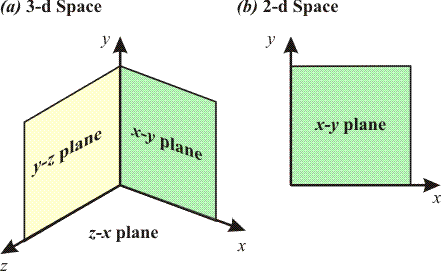- the positive x-direction points to the right, is horizontal, and in the plane of the paper;
- the positive y-direction points upward, is vertical, in the plane of the paper;
- the positive z-axis is normal to these two, and points out of the paper.

3D and 2D cartesian coordinate systems